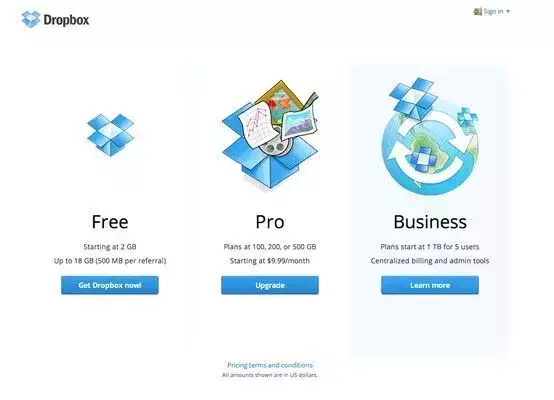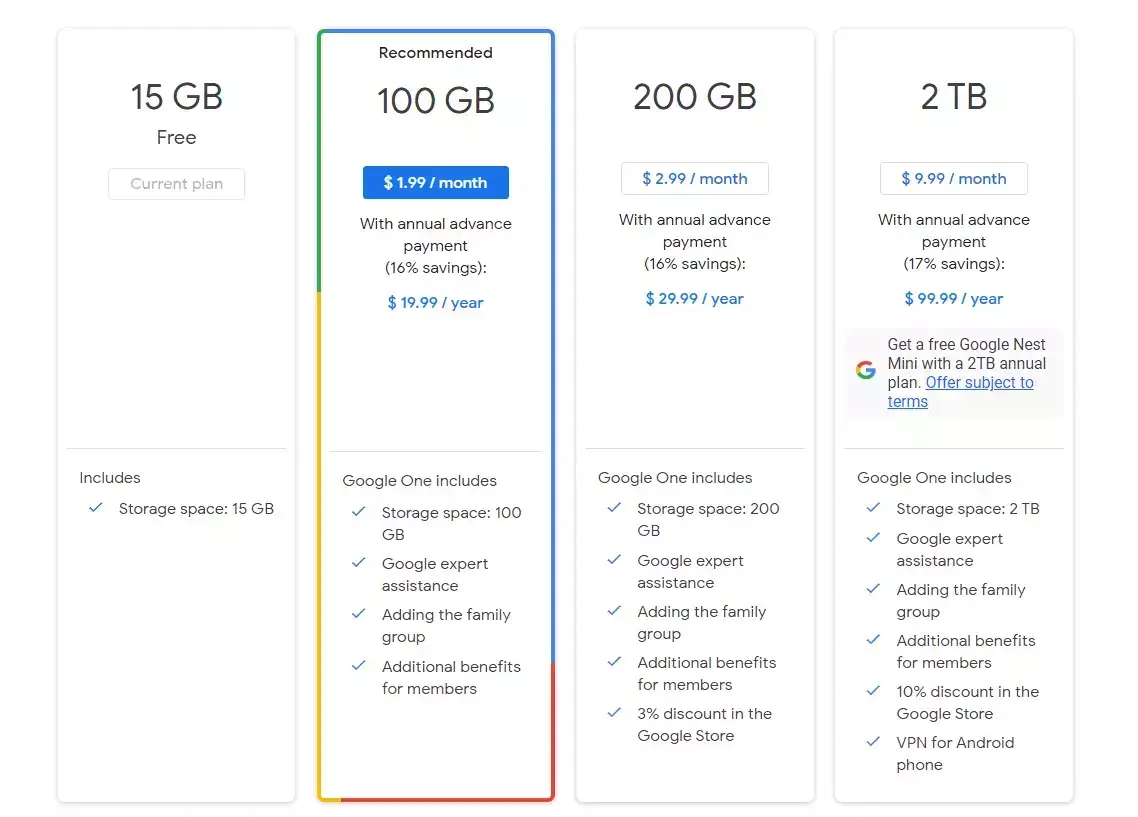In today’s digital age, protecting your photos is essential for any photographer. If your computer fails or is stolen, you don’t want your documents to be lost. That’s where cloud storage comes in.
Cloud storage can be a great option for photographers because it offers flexibility and scalability. Your photos won’t fill up your hard drive, and you can access them anywhere with an internet connection.
There are many cloud storage providers available, each with its strengths and weaknesses. Understanding the different features available is key when it comes to choosing the right provider for you.
In the case of photo storage, there are many factors to consider. First, you need to consider the price. Cloud storage providers typically offer a free plan with a limited amount of storage.
Next, consider the features offered by each provider. It’s possible to exchange files with others or build collaborative folders in some providers. And security is the most critical factor to consider.
Benefits of Cloud Storage for Photographers
When it comes to photography, cloud storage is a great way to back up your photos and keep them safe. This is because the cloud provides a secure place to store your photos, and you can access them from anywhere with an internet connection.
Additionally, cloud storage can be used to share photos with others, which makes it a great tool for photographers. Cloud storage makes it simple for photographers to exchange their photos for photo editing services.
7 Best Online Cloud Storage Platforms
01. Dropbox | Photo Backup Online

Dropbox is one of the world’s largest file storage platforms, with 400 million users and 600 billion files stored. This service has a lot of advantages that make it an excellent choice. The Dropbox cloud storage service is particularly useful for photos, even though it is a simple cloud-based service.
Sadly, the free Basic edition isn’t much use because new users only get 2GB of online storage, which isn’t likely to last long. For those who like to store their photographs in a specific folder on a computer, this is worth a try.
As a cloud storage service, Dropbox may be used to sync folders on a desktop or laptop PC or Mac. There is also a camera upload option in Dropbox that will automatically transfer all images captured on a mobile device to the cloud.
Dropbox is a relatively simple solution for laptop/desktop PC/Mac users who merely want the protection of a backup without giving up manual control over their photographs.
Pros and Cons of Dropbox
Pros | Cons |
|
|
02. Google Drive

The Google Drive cloud storage and synchronization service lets you store and sync stuff online. With it, you can store files in the cloud, sync files, and share files. As of May 2017, Google Drive has over one billion active users.
With Google Drive, you may store any sort of file, and the price depends on the capabilities and storage space you need. You receive a generous 15GB for free, but there are also expensive upgrades for 100GB, 200GB, and 2TB, depending on your needs.
There are also 10, 20, and 30TB variants, but they are exorbitantly priced. In addition to storage, Google Drive is integrated with Google’s cloud-based productivity applications, including Word, Excel, and PowerPoint.
Pros and Cons of Google Drive
Pros | Cons |
|
|
03. OneDrive Cloud Storage

For photographers, OneDrive is one of the best online storage options. It’s simple to use and syncs all of your images across many devices. Microsoft purposefully designed OneDrive to look identical to Windows 10, which means there will be little to no learning curve for any Windows users who migrate to the platform.
There’s nothing fancy about OneDrive, but its main selling point is its seamless integration with popular Microsoft 365 apps like Word and Excel. But it doesn’t mean OneDrive doesn’t have some great photo management options. OneDrive lets you search, tag, and make albums.
Pros and Cons of OneDrive Cloud Storage
Pros | Cons |
|
|
04. pCloud | Cloud Services

pCloud is one of the few cloud services that provide lifetime subscriptions, so you get a virtual, permanent cloud drive with pCloud. An “individual cloud space where you may keep all of your data” with “a user-friendly interface that clearly shows everything is and what it does,” according to the company’s description.
With pCloud’s Premium and Premium Plus plans, you get unlimited remote upload bandwidth, but just 500GB and 2TB of download link traffic per month, respectively, for each plan.
Large media files can be synced freely, even though there are some bandwidth constraints in place. You can use the service on a computer, a mobile device, or even through a web browser.
Pros and Cons of pCloud
Pros | Cons |
|
|
05. Adobe Creative Cloud

To meet the needs of photographers, Adobe Creative Cloud offers a variety of cloud-based storage options, all of which have beautiful image galleries. The 20GB option is still well worth it if you want to create the greatest images possible, given that Photoshop and Lightroom are two of the best photo editing apps available.
Managing your photos in Creative Cloud is also a pleasurable experience, owing to elegant image galleries where you can study your work and share images with others. Collaborators can contribute images to shared folders using Group Libraries, but you can always keep individual files private.
Pros and Cons of Adobe Creative Cloud
Pros | Cons |
|
|
06. iCloud | Cloud Storage for Photographers

Because of Apple’s ecosystem’s flawless device integration, iCloud is the most natural cloud storage option if you already own an iPhone or a Mac. The premium subscriptions for iCloud give 50GB or 200GB of storage. When you sign up, you’ll also receive 5GB for free.
iCloud has the neat and uncomplicated visual organization that Apple is known for, as well as two-factor authentication for security. This is a consumer-oriented application, and business customers will not find the kind of specialized security or advanced functionality seen in other products.
In 2021, Apple will also release iCloud+, a subscription version of iCloud that contains sophisticated capabilities such as Hide My Email, Private Relay (which encrypts your browser traffic so that no one, even Apple, can access it), bespoke iCloud Mail domains, and extended HomeKit Secure Video storage.
Pros and Cons of iCloud
Pros | Cons |
|
|
07. Backblaze | Best Cloud Storage

Backblaze provides a very handy option for photo backup. It’s important to point out right away that you can’t share your photos, and you don’t get any extra features. Backblaze only backs up and stores your images (and other important information) and does nothing else.
Backblaze offers numerous important strengths, one of which is its smooth functioning, which requires no user input – everything is continuously backed up, and it all happens in the background automatically.
Not only that, but with the solitary (personal) membership plan, you receive unlimited storage capacity, so there’s no need to worry about having a ton of photos (or films, or anything else) to back up.
Pros and Cons of Backblaze
Pros | Cons |
|
|
Final Words
Choosing the best cloud storage for photographers depends on your specific needs—whether you prioritize storage size, collaboration, or integration with editing tools. Whether you’re backing up wedding shots or organizing product photos, don’t risk losing your work.
Need help editing your photos once they’re stored? Explore our professional photo editing services.
Check out Our Latest Articles
Frequently Asked Questions
Your data is indeed more secure in the cloud than it is on your hard drive. Files can also be accessed and maintained easily thanks to the system’s design. Cloud services, on the other hand, put your data in the hands of other individuals, making it less secure. There’s no huge deal if you’re not very concerned with privacy.
An Internet service provider (ISP) manages and administers data storage as a service under a cloud computing architecture called cloud storage. Rather than purchasing and maintaining your data storage infrastructure, it’s delivered on-demand with just-in-time capacity and pricing.
OneDrive is less expensive for the same amount of storage space, whereas Google Drive is slightly more expensive. Furthermore, OneDrive provides greater cloud storage space for corporate purposes. As a result, we recommend that you use OneDrive as your first cloud storage service if you don’t mind the price and storage space.

